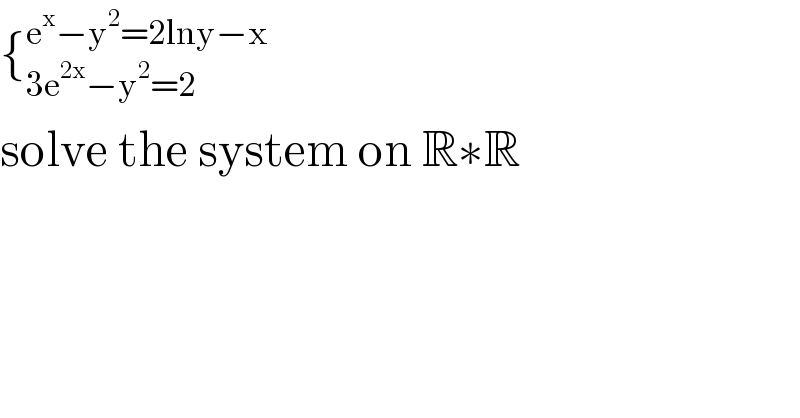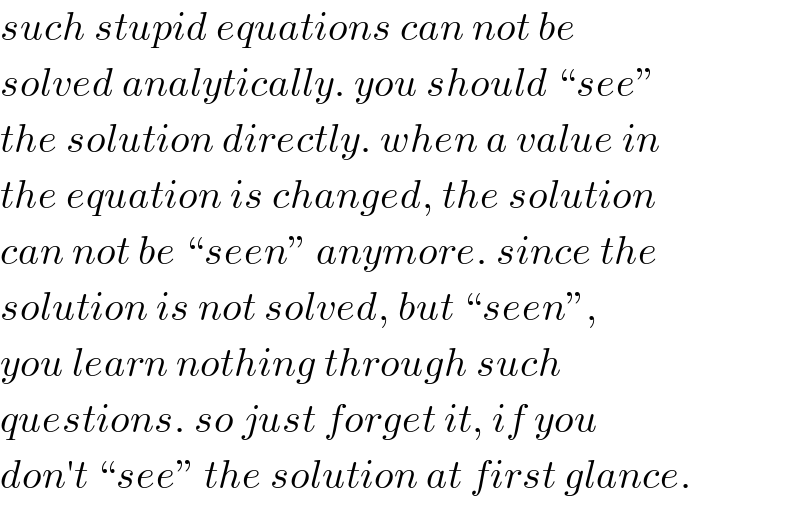
Question and Answers Forum
Question Number 78974 by ~blr237~ last updated on 22/Jan/20

Commented by jagoll last updated on 22/Jan/20

Commented by jagoll last updated on 22/Jan/20

Commented by MJS last updated on 22/Jan/20
give a few more examples where we can use this solving method (let me call it "finding a function") so we can practice and learn something. to post well constructed problems to test if somebody will find the key can be fun but I usually refuse to solve riddles.
Answered by MJS last updated on 22/Jan/20

Commented by jagoll last updated on 22/Jan/20

Commented by mr W last updated on 22/Jan/20

Commented by mr W last updated on 22/Jan/20

Answered by mind is power last updated on 22/Jan/20

Commented by ~blr237~ last updated on 22/Jan/20

Commented by mind is power last updated on 22/Jan/20

Answered by ~blr237~ last updated on 22/Jan/20

